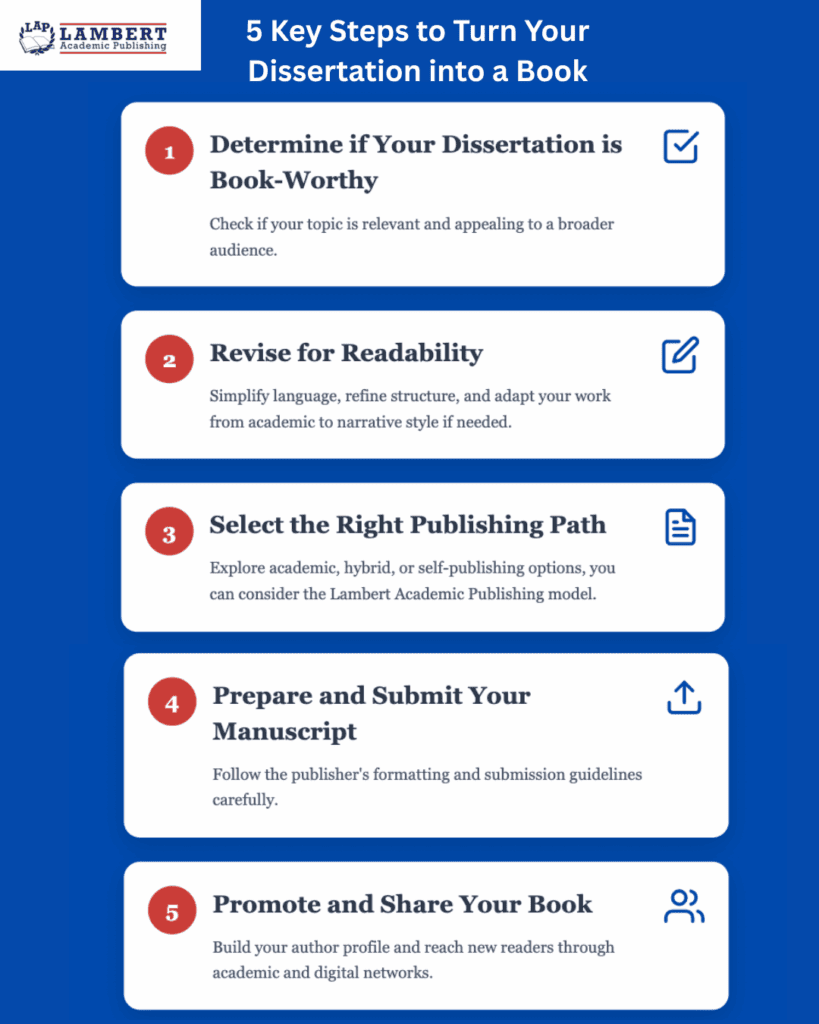Can You Publish a Research Paper Independently?
Yes, you can publish a research paper independently, even without affiliation to an academic institution. As long as your manuscript is academically sound and research has been conducted, you can submit it to a suitable journal, follow its submission guidelines, and complete the peer-review process. If you’re unaffiliated, you can list “Independent Researcher” or “Independent Scholar.”
Independent publishing also gives you additional routes. Alongside journals, you can use open-access platforms or academic repositories that accept work from non-affiliated authors. Some researchers choose to turn their research paper into a book. For example, many authors decide to publish a research paper as a book with Lambert Academic Publishing, a publisher that supports independent researchers by providing ISBN registration and worldwide distribution.
Independent publishing is completely achievable and the right outlet can give your work long-term visibility and credibility.
How to Publish a Research Paper Independently (Step-by-Step)
1. Conduct your research
Make sure your research paper follows the standard structure:
- Abstract
- Introduction
- Method / Data / Process
- Results
- Discussion
- Conclusion
- References
If you decide to publish in a journal, then most of them do not require an institutional affiliation; you can simply list:
- Your full name.
- “Independent Researcher” as affiliation.
- Your email for correspondence.
2. Write a high-quality manuscript
Make sure your research is original and well-supported with a deep literature review and, where pertinent, a proper experimental or methodological design. When writing the paper, aim for a high-quality, well-structured manuscript, paying scrupulous attention to grammar, clarity, and formatting; all these can strongly affect how reviewers will perceive your work. Equally importantly, seek feedback from peers or more experienced academics; pre-submission review can greatly strengthen your final draft.
3. Choose the Type of Publication
You have several options for publishing independently, each offering a different level of visibility, academic rigor, and control over your work:
Book-style academic publishing like Lambert Academic Publishing)
Lambert Academic Publishing offers an accessible route for independent authors to release their work as a standalone academic-style book. It’s easy to publish through them, though the process is not peer-reviewed, so it’s best for sharing completed research rather than seeking formal academic validation.
Peer-reviewed journals
Traditional academic and industry-specific journals accept independent researchers as long as the research is original, methodologically sound, and well-written.
Preprint platforms
Platforms like ResearchGate allow you to share your work quickly, build visibility, and gather early feedback, ideal if you want your findings online without delay.
Open-access journals
These journals make publishing more accessible, with a wide range of reputable options that are friendly to independent authors.
4. Follow submission guidelines
5. Pass Peer Review (If needed)
If you decide to publish with peer-reviewed journals, they will evaluate:
- Originality
- Methodology
- Relevance
- Clarity
Affiliation doesn’t influence acceptance usually the quality does.
Understanding Research Publishing
The Landscape of Research Publishing Today
The academic publishing industry has changed significantly, with more researchers seeking independent routes to share their work. Traditional publishing offers credibility through peer-reviewed journals but limits authors’ control over the process.
In contrast, independent publishing allows researchers to bypass these constraints and share their work more freely and quickly. Moreover, many platforms now even allow you to publish your thesis for free, making it easier for researchers to disseminate their findings.
Benefits of Independent Publishing
Control Over Content and Distribution
One of the primary benefits of independent publishing is the complete control you have over your work. You decide on the final version, structure, design, and distribution methods.
By choosing platforms like Lambert Academic Publishing, you not only maintain autonomy over your content but also benefit from their expertise as academic book publishers. Lambert Academic Publishing specializes in publishing research papers online at no cost to the authors, while also providing royalty payments for your work.
This means you can share your research widely while still receiving compensation for your contributions.
Potential for Higher Earnings
Independent publishing often leads to higher earnings. Instead of sharing royalties with a traditional publisher, you can retain a larger portion of your profits.
By using a platform like Lambert Academic Publishing, you ensure that while they provide the infrastructure to publish your research, you still have the opportunity to earn royalties based on the success of your work.
This requires a proactive approach to marketing and distribution, but the financial rewards can be substantial if your work resonates with a broad audience.
Transforming Your Research Paper into a Book
What Is a Research Paper Book?
A research paper book is an extended version of your research that offers additional context and is more accessible to a wider audience. Unlike concise research papers, these books allow for a deeper exploration of topics, targeting diverse readers, including academics, students, and industry professionals.
The importance of book publishing is clear: it increases your reach and allows you to make a lasting impact beyond journal readers.
Steps to Create a Research Paper Book
- Choosing the Right Format: Decide whether your book will be digital, print, or both.
- Structuring Your Content: Break down your research paper into chapters, enhancing your work with additional literature reviews or case studies.
The Academic Perspective
Is a Research Paper an Academic Book?
While research papers focus on specific questions, academic books provide comprehensive coverage of broader subjects. Transforming a research paper into a book can significantly enhance its impact and reach.
An academic book delves deeper into the topic and can position the author as a thought leader in their field.
Practical Aspects of Self-Publishing
Marketing Your Research Paper Book
Once published, marketing becomes crucial. Utilize free AI tools for social media to streamline your promotional efforts. Platforms like Hootsuite and Canva can significantly enhance engagement, enabling you to automate posts and create visually appealing content.
Engage with your audience through blogs, social media, webinars, or guest lectures to create awareness and boost visibility.
The Future of Independent Research Publishing
The future of independent research publishing looks promising. As more academics embrace digital platforms, researchers can reach global audiences without relying solely on traditional publishing channels. This path not only allows you to elevate your work but also offers the potential for significant impact in your field.
So, yes, you can publish a research paper independently, and by selecting the right platform like Lambert Academic Publishing, you can maximize your benefits and ensure that your hard work is recognized and rewarded!
Can You Publish a Research Paper Independently? Read More »







